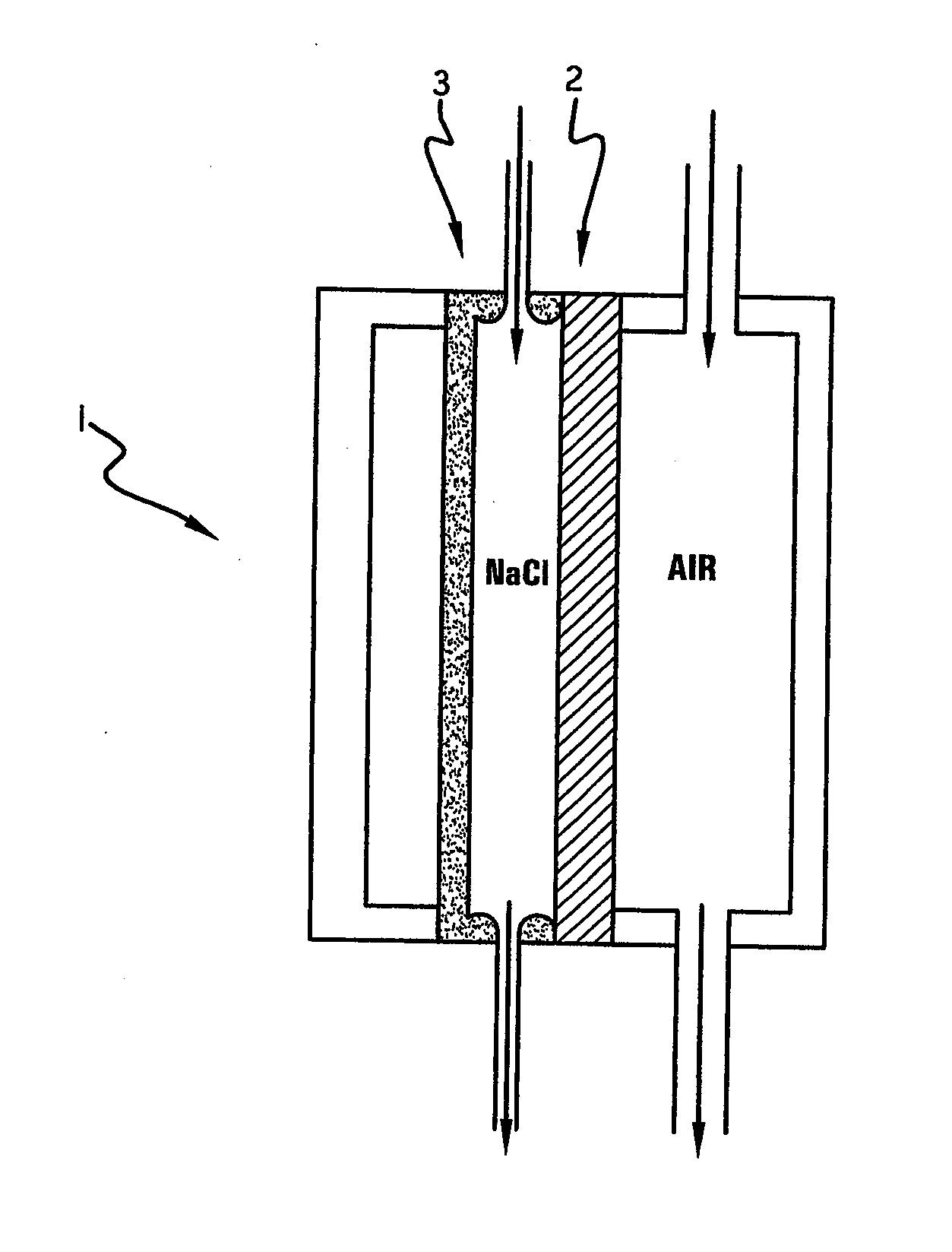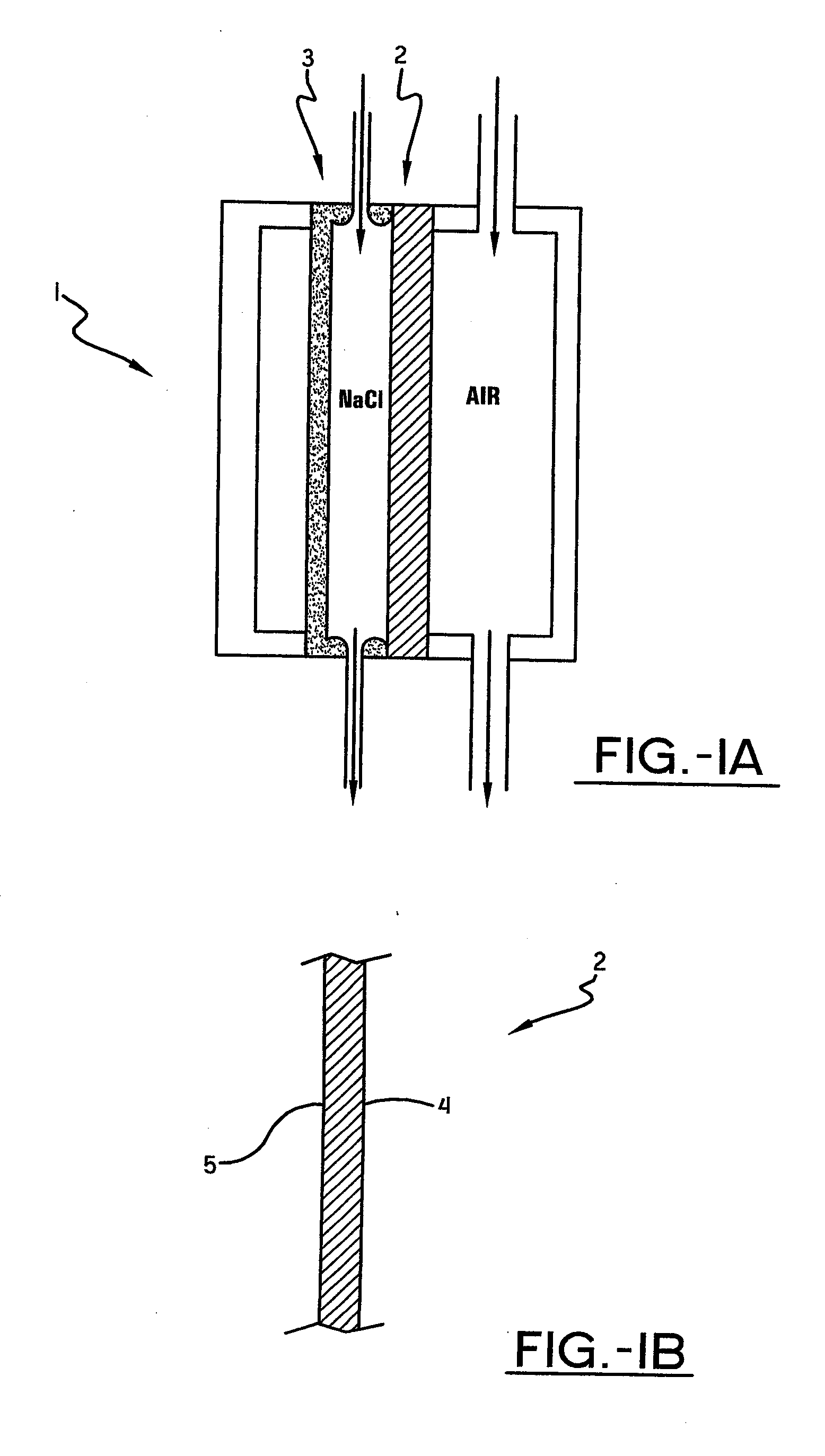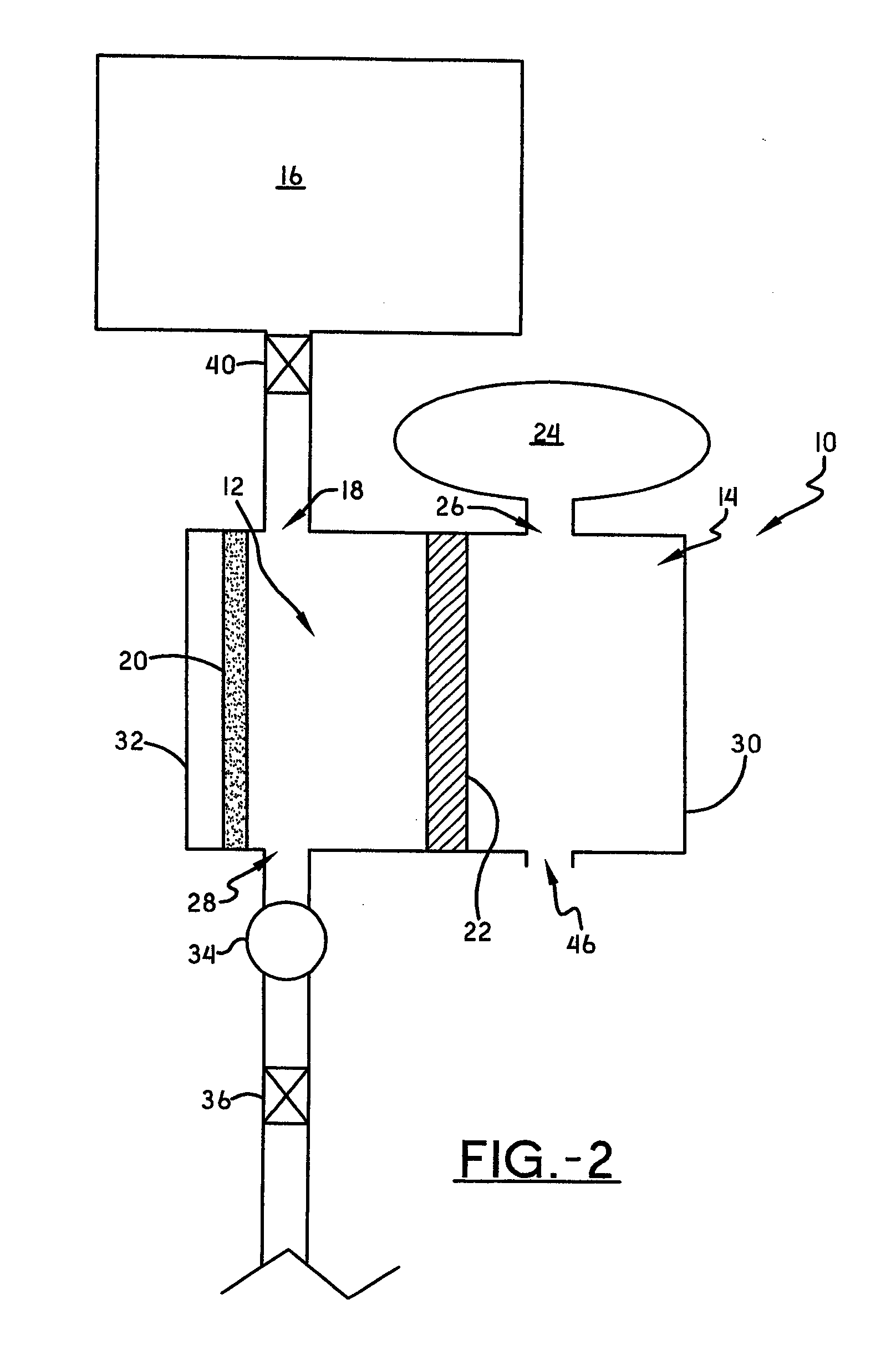ELECTROLYTIC DEVICE FOR GENERATION OF pH-CONTROLLED HYPOHALOUS ACID AQUEOUS SOLUTIONS FOR DISINFECTANT APPLICATIONS
a technology of electrolysis device and disinfectant, which is applied in the direction of electrolysis components, instruments, chemistry apparatus and processes, etc., can solve the problems of high energy input, difficult to handle solid salt, and high pressure required to create fine droplets. , to achieve the effect of economic and safe handling
- Summary
- Abstract
- Description
- Claims
- Application Information
AI Technical Summary
Benefits of technology
Problems solved by technology
Method used
Image
Examples
example 1
[0058]As shown experimentally in the laboratory of the assignee, one embodiment of a single liquid chamber device of the type described in FIG. 1 of the current invention delivers, as desired, HClO solutions of concentrations in the range 80-240 ppm chlorine at pH 5.9-7.8 as shown in Table 1. The operation of the electrosynthetic reactor relies on the use of a DC constant current power supply connected to the GDE cathode (E-Tek ELAT® GDE LT250EW; 10 cm×10 cm) to induce reduction of dioxygen to water and the oxidation of chloride ion at the DSA anode to generate HClO. Prior to connecting and turning on the power supply, the electrosynthetic reactor is filled with either buffered or unbuffered NaCl solution from the gravity feed container and the flow rate adjusted with a manual valve to 2-12 ml per minute. Both the HClO concentrations, as well as the pH of the effluent solution, are measured by conventional instrumentation and methods at various time intervals during continuous opera...
PUM
| Property | Measurement | Unit |
|---|---|---|
| pH | aaaaa | aaaaa |
| pH | aaaaa | aaaaa |
| hydrophobic | aaaaa | aaaaa |
Abstract
Description
Claims
Application Information
 Login to View More
Login to View More - R&D
- Intellectual Property
- Life Sciences
- Materials
- Tech Scout
- Unparalleled Data Quality
- Higher Quality Content
- 60% Fewer Hallucinations
Browse by: Latest US Patents, China's latest patents, Technical Efficacy Thesaurus, Application Domain, Technology Topic, Popular Technical Reports.
© 2025 PatSnap. All rights reserved.Legal|Privacy policy|Modern Slavery Act Transparency Statement|Sitemap|About US| Contact US: help@patsnap.com



